February was all traveling for me. London, Louisville, Chicago, Milwaukee, with barely a breath in between. I would fire the person that set up that schedule if it weren’t me. Upon touching ground at LaGuardia on March 3, I looked forward to a comparatively relaxing month of everyday routine.
But New York isn’t a city that will permit sustained rest. It’s also a city that will punish you for any absence by filling up your calendar with days and nights of catch-up.
Not that I’m complaining. Much. A lot of that catch-up was very enjoyable—actually, all of it—the kind of cultural activity that reminds you why you live in this crazy, compulsive city. Concerts, plays, talks, soirees, lectures, book events, plus a little mitigating Tri-state action. Some weeks in Gotham offer a pu pu platter of all of the above. And the last fortnight has been like that. Hey, it’s New York and things happen fast and all the time.
Here are a few of the highlights. They run the gamut—a reminder of why this publication is called The Mix!
Sumo
“Educational” is not a word upon which theatrical smashes are built. It is not an adjective that leads to long lines at the box office. But “educational” can be a surprising thing when applied to a play. In my decades of theatergoing, only rarely have I walked away from a drama drawn from real life having learned something about the world I didn’t already know. At the end of Sumo, the new play by Lisa Sanaye Dring at the Public Theater, a co-production of the Ma-Yi Theater Company and La Jolla Playhouse, I learned enough to fill a composition book—beginning with the correction pronunciation of Sumo. (It’s “soo-MOW,” not “SOO-mow.”)
I also learned that sumos train together in a heya, which roughly translates as “stable”; the ring their matches take place in are called dohyō; the elaborate loincloth they wear is a mawashi; there is a ranking system among competitive sumos; and they have to contend with the same corrupting sponsorship problems that Western athletes have to deal with.
Once you adopt to the exotic milieu of Dring’s drama, including its many skillfully staged sumo bouts, however, you can recognize a classic coming-of-age story at the play’s core. It centers on Akio, a small, scrappy 18-year-old who arrives at a heya at a lowly apprentice assigned to do nothing but scrub and sweep. Akio (Scott Keira Takeda) has a big ambition and a big chip and quickly clashes with the various sumos in the group, as well as their gruff, forbidding, borderline-sadistic leader, a renowned sumo named Mitsuo (David Shih).
Toward its final half hour, Sumo becomes more formulaic in its messaging about the various life lessons to be drawn from sumo, about the nature of power, fame, mentorship and friendship. But until then, it consistently rewards the viewer with new knowledge and perspectives about a world that I’ll wager the average American theatergoer has never gave a second thought to. The complexly interwoven production owes much to costume designer Mariko Ohigashi, sound designer Fabian Obispo, production designer Hana S. Kim and taiko drum performer Shih-Wei Wu.
Hobson’s Choice
I never had a favorite architect until I disembarked an Amtrak train in New London, CT, sometime in the aughts. I passed through the old train station, turned around and took in the building in full and thought, “Well, that is an impressive pile of red bricks. Who built that?!”
I walked back into the station and found it was Henry Hobson Richardson, a man so prominent and influential in his field during his short life (1838-1886) that he lent his name to entire genre of architecture: Richardsonian Romanesque.
After that, I kept my eyes peeled for any example of Richardson’s work. And I found them, for the man was prolific. His buildings are also hard to miss. They are heavy, weighty, full of towers and arches, and composed of tons of dark brick and stone. We stayed at the Hotel Henry (now the Hotel Richardson) in Buffalo, originally built as a state asylum in the 1880s. It was like lodging in a medieval castle.
Hunting for Richardson buildings can be tricky, however, because there is so much Richardsonian architecture in the country. Many architects built a career by simply aping his style. I thought I had found a Richardson building when I laid eyes on the U.S. Custom House in Key West. But it was just in the Richardson style, designed by architect William Kerr. Similarly, the beautiful old Brooklyn Fire Headquarters in downtown Brooklyn is a perfect facsimile of a Richardson structure, but by architect Frank Freeman.
I jumped at a recent opportunity to learn more about Richardson when Jay Wickersham, an architect and lawyer, who taught for fifteen years at the Harvard Graduate School of Design, dropped by Mary Kate’s place of business, Robert A.M. Stern Architects, to talk about his new book Henry Hobson Richardson: Drawings from the Collection of Houghton Library Harvard University. Wickersham drew from 4,000 architectural drawings by Richardson and his associates—sketches that few people have seen—selecting roughly 400 to feature in the book.
Richardson was a man of Falstaffian proportions and appetites. He loved to eat and drink. He weighed about 300 pounds. When he visited John and Frances Glessner in Chicago, trying to convince them that he was the man to build their new home, the only seat that could accommodate him was the piano stool. Frances described him in her diary as the largest man she had ever seen.
(The Glessner House, a masterpiece that was one of Richardson’s final works, was completed after his death. He told the couple, “I’ll plan anything a man wants, from a cathedral to a chicken coop. That’s the way I make my living.” You gotta like a man like that.)
As Wickersham spoke, I found myself idly wondering if Richardson ever had a cocktail named after him. He certainly lived during one of the cocktail’s golden ages, and frequented restaurants enough. Surely, Locke-Ober in Boston honored him with a namesake drink at some point. But there doesn’t seem to be a Richardson cocktail, however. I may have to create one.
I also learned from Wickersham that among Richardson’s employees were future greats Stanford White and Charles Follen McKim, who went on to form McKim, Mead and White. This made Richardson’s impact all the greater, since McKim and White themselves were so widely influential.
A Jerome Mansion Manhattan
Speaking of Stanford White, his final cocktail may very well have been a Manhattan.
White left the Manhattan Club around 11 p.m. on June 26, 1906, and walked to Madison Square Garden (which then actually stood on Madison Square) to see the first performance of the musical comedy Mamzelle Champagne. There, Pittsburgh millionaire Harry K. Thaw approached White’s table and shot him dead. Thaw’s wife was showgirl Evelyn Nesbit, whom White, a known sexual predator, had had an affair with when he was 48 and she was still a teen.
I was put in mind of these events when I was invited to talk about the history of the Manhattan cocktail at TenBerke, an architectural firm headed by architect Deborah Berke. TenBerke’s offices are at 41 Madison Avenue at the corner of E. 26th Street, facing Madison Square. Before the current building was erected, this was the location of the financier Leonard Jerome’s mansion, which later was the final home of the private Manhattan Club (from 1899 to 1967, when the mansion was demolished).
There are various theories about when and where the Manhattan cocktail was invented, but the strongest one ties it the Manhattan Club. Private clubs in those days had bars and were known to serve good cocktails. (No, the popular tale that Jennie Jerome—Leonard’s daughter and Winston Churchill’s mom—invented the drink for a fundraiser for Democratic political candidate Samuel J. Tilden is not true.)
If the drink indeed originated at the Manhattan Club, that act of creation occurred at the Benkard House at 96 Fifth Avenue near the corner of 15th Street, which what the club’s home from 1865 to 1885, when the mansion was felled by a fire. Nonetheless, it can be said with almost 100% certainly that Manhattan cocktails were served and drunk at the Jerome Mansion.
I spoke about this history and more, while the staff at TenBerke enjoyed Perfect Manhattans, Reverse Manhattans and Black Manhattans. I chose a Black Manhattan, and looked out the window onto Madison Square and wondered how much of the view Leonard Jerome and I shared.
A Funny Thing Happened on the Way to the Forum
One of the joys of living in New York City is you never know it all.
I’ve been here 37 years and did not know there was a place called the Austrian Cultural Forum on East 52nd Street. But so there is. Its current building—very modern, very shiny, very narrow and very tall—was completed in 2002. It rises from a plot that is only 24.5 feet wide and 81 feet deep, and yet is 24 stories tall.
There is an appropriately narrow and tiny auditorium in there, where we attended “The Zero Hour,” an evening of Austrian literature and music from the end of World War II. It was directed by our friend Jeannie Im, who also sang alongside Michael Protacio and Peter Kendall Clark. It was a moving show about the musical and written reaction to the atrocities of the Nazi regime, subject matter that is as unsettlingly relevant today as it was then. I recognized a song by Kurt Weill, but otherwise the material was refreshingly new to me.
Afterwards there was a reception. “Do you think there will be Grüner Veltliner?” I asked Mary Kate. There was. How could there not be?
New Food/Drink Book Roundup
Returning from my travels, there were several new books waiting for me, all worth looking into. Here are three:
Tiny Cocktails: The Art of Miniature Mixology: A Cocktail Recipe Book by Tyler Zielinsky (Clarkson Potter)
This is the first book by Zielinsky, a prolific and vocal producer of cocktail journalism. I remember first encountering and writing about miniature versions of cocktails at New York bars a decade ago. The trend has only grown since then. But it’s taken this long for the genre to get its own book. There are 60 recipes here, from the fairly famous (Snaquiri) to originals to small versions of classic drinks like the Negroni and Irish Coffee. Biggest challenge here: You may have to invest in some adorable glasses. But don’t worry. The book has a guide to tiny glassware makers.
Spirited Women: Makers, Shakers, and Trailblazers in the World of Cocktails by Sammi Katz and Olivia McGiff (Union Square & Co.)
This is the second book by the team of Katz (words) and McGiff (art), and is a considerably more ambitious enterprise than their previous Cocktails in Color. In it, they tells the stories of dozens of innovative women in the booze business, be they bartenders, distillers or distillery owners, including Michter’s master of maturation Andrea Wilson, Dickel’s head distiller Nicole Austin, and bartender and educator Misty Kalkofen. Each mini-biography is accompanied by a cocktail recipe and scores of eye-catching color illustrations by McGiff.
Coastal: 130 Recipes from a California Road Trip by Scott Clark, Betsy Andrews and Cheyenne Ellis (Chronicle Books)
Veteran food journalist Betsy Andrews has been around so long it’s hard to believe this is her first cookbook. (She had published books of poetry.) But the Beard-Award-winning writer has come through with a beauty for her debut. True to its name, Coastal has a California heart. Its co-author and subject is chef Scott Clark and his quirky Hwy. 1-side restaurant Dad’s Luncheonette, which is located inside an old railroad-car diner at the edge of the Pacific. The photography is gorgeous and all the recipes look tempting (though folks who have ready access to fresh west-coast produce and seafood are going to have a distinct advantage). Throughout the book, Andrews visits with fishermen, crabbers, farmers, winemakers, and foragers who make their living along the Pacific Coast Highway between San Francisco and Los Angeles. And there are a few cocktail recipes, which is always good. RECIPE BELOW!
Jersey Jaunts
Though I live in Brooklyn, I get my car serviced in New Jersey. There are three reasons. We bought the car in Jersey, so it made sense to get it serviced at the same dealership. Two, Mary Kate had relatives down there until recently, so we were in central Jersey a lot. And three, we don’t trust New York City mechanics. (We could tell you stories.)
I won’t lie. It’s a drag to drive two hours just to ensure you won’t be ripped off. But there are advantages. The drive back from picking up a serviced car presents tantalizing lunch opportunities. Jersey has great food—hot dogs, hamburgers, pizza, seafood, corn, tomatoes, you name it—and many, many old-school eateries. Every time I drive home, I pick a different place to explore.
This time is was Vic’s Italian-American Restaurant, doing business in Bradley Beach since 1947. It was a perfect fit, since it opens early and does lunch. By the looks of it, the owners haven’t touched a thing since it opened—not the wood paneling, the leatherette booths, the neon signs, nothing.
Vic’s is known for its thin-crust pizza and meatballs. I had both. I’d rate the meatballs a 10, the marinara they came in a 10, and the pizza a solid 6. For thin crust, the edges were a big thickish, and the sauce and cheese were not exactly bursting with flavor. I covered the pie in parm, oregano and red pepper flakes to compensate.
But I’d give the atmosphere an 11. And the atmosphere is the real draw here. We’re talking movie-set, mid-century, Italian restaurant perfection. I’ll be back for a full dinner with appetizers.
The Restaurant Guys and Rocco
I didn’t quite make it home that night. The Vic’s stop was followed by one in New Brunswick, where I met Mary Kate at the train station. Bar Regular Francis Schott and his restauranteur partner Mark Pascal have an engaging podcast called “The Restaurant Guys.” In an improbable development, they were invited by the New Brunswick Performing Arts Center (NBPAC) to take their podcast on stage for a series of four conversations before a live audience. It’s the first live podcast I’ve ever seen (or heard of).
Schott and Pascal’s first guest was chef Rocco DiSpirito, who came out with a new book, Everyday Delicious, last year. From the way they joshed and joked onstage, I thought the three were old friends. But they had just met. There was a lot of talk of meatballs and family and what their mothers had taught them about cooking.
I met DiSpirito afterward at the after-party. He was charming and humble for a man who has been a household word for three decades.
The party was at Schott and Pascal’s restaurant Catherine Lombardi, which is just a few yards down the block from NBPAC; both were across the street from the hotel we stayed in.
(Whenever I am in New Brunswick visiting Catherine Lombardi or its sister restaurant Stage Left, I am reminded of Addison DeWitt’s line about New Haven in All About Eve: “To the theater world, New Haven, Connecticut, is a short stretch of sidewalk between the Shubert Theater and the Taft Hotel, surrounded by what looks very much like a small city.”)
At the bar, I ordered one of Stage Left/Catherine Lombardi’s famous Brooklyn cocktails, then a round of Jack Roses, because Lisa Laird, owner of Laird’s applejack, happened to be there. It seemed only appropriate. As for food, there was charcuterie, steak and burgers. There were meatballs, too. I’m not sure whose family recipe it was.
Odds and Ends…
Ferdinando’s Focacceria, the Sicilian food icon in Brooklyn that announced its sudden closure two weeks ago, after 121 years in business on Union Street near Hicks Street, has found a savior. Local restaurateur Sal Lamboglia, who runs Cafe Spaghetti and Swooney’s just yards away, will become the new owner of the old eatery. Owner Frank Buffa said he was open to a new person taking over Ferdinando’s, which he has run for 50 years. Eater reported that “under Lamboglia’s watch, it won’t be the same focacceria restaurant, but something different that will pay homage to Ferdinando’s in both the space and name.” Imagine something similar to Le Veau d’Or when it was handed over to its current owners… The Mix checked out HighLife Burger, the new narrow East Village burger joint from the owners of Electric Burrito, the narrow East Village burrito joint. The burgers and prices were good, and the queso fries were a revelation that made we wonder why anyone does just plain cheese fries. I’ll be back to try the hot dogs…
Tequilas, the game-changing Mexican restaurant in Philadelphia, which closed after a devastating fire in February 2023, will reopen on March 18. David Suro Piñera opened Tequilas just off Rittenhouse Square in 1986, slowly but surely changing locals' mind about the applications of tequila as an adult beverage. He has since become a Tequila educator of great note, a Tequila maker and an author. Go have dinner and drink and support him!… In the We-Don’t-Know-How-We-Feel-About-It Department, the new generation of owners at Italian Village, the classic downtown Chicago red sauce joint, has made some changes… On April 8, Superbueno welcomes celebrated chefs Isabel Coss and Matt Conroy from the acclaimed Pascual. Chefs Coss and Conroy previously made names for themselves in the New York dining scene (most recently Cosme and Oxomoco, respectively) and have since made waves in the D.C. dining scene with Pascual and their neo-bistro Lutece. The evening features a four-course menu of Pascual’s seasonal favorites with the option to enjoy three cocktails developed for the evening and/or tequila/mezcal pairings by Superbueno owner Nacho Jimenez and Kip Moffitt. The dinner is $90 per person, not including tax, gratuity or drinks, and is available 6-10 p.m. Reservations may be made on Resy… Confidant, a new restaurant from chef/owners Brendan Kelley and Daniel Grossman, will open this Wednesday, March 19, as the first full-service restaurant in Industry City (67 35th Street, Building #5). The owners have worked at Roberta’s, Gage & Tollner, Foul Witch, Per Se, and Aska… Koloman has brought back its guest Martini Hour, benefitted City Harvest. This week the Martini is brought to you by booze writer Amanda Schuster. Called Friday Envelope, it is made of vodka, Pisco, dry vermouth, olive brine and orange bitters… Mark Grossich, who created the Campbell Apartment cocktail bar out of an old railroad executive’s private office inside Grand Central Terminal in 1999, died on Feb. 8 in Manhattan. He was 74. He also co-founded the popular Bar & Books chains of bars.
Dad’s Sleepy Time Nightcap
Scott Clark, Coastal, 2025
1 3/4 ounce St. George Spirits Botanivore Gin
1/2 ounce Greenbar Poppy Amaro
1/2 ounce Barolo Chinato, preferably Cocchi
Orange Twist
In a mixing glass half filled with ice, combine all liquid ingredients and stir until chilled. Strain into a chilled rocks glass. Garnish with orange twist.




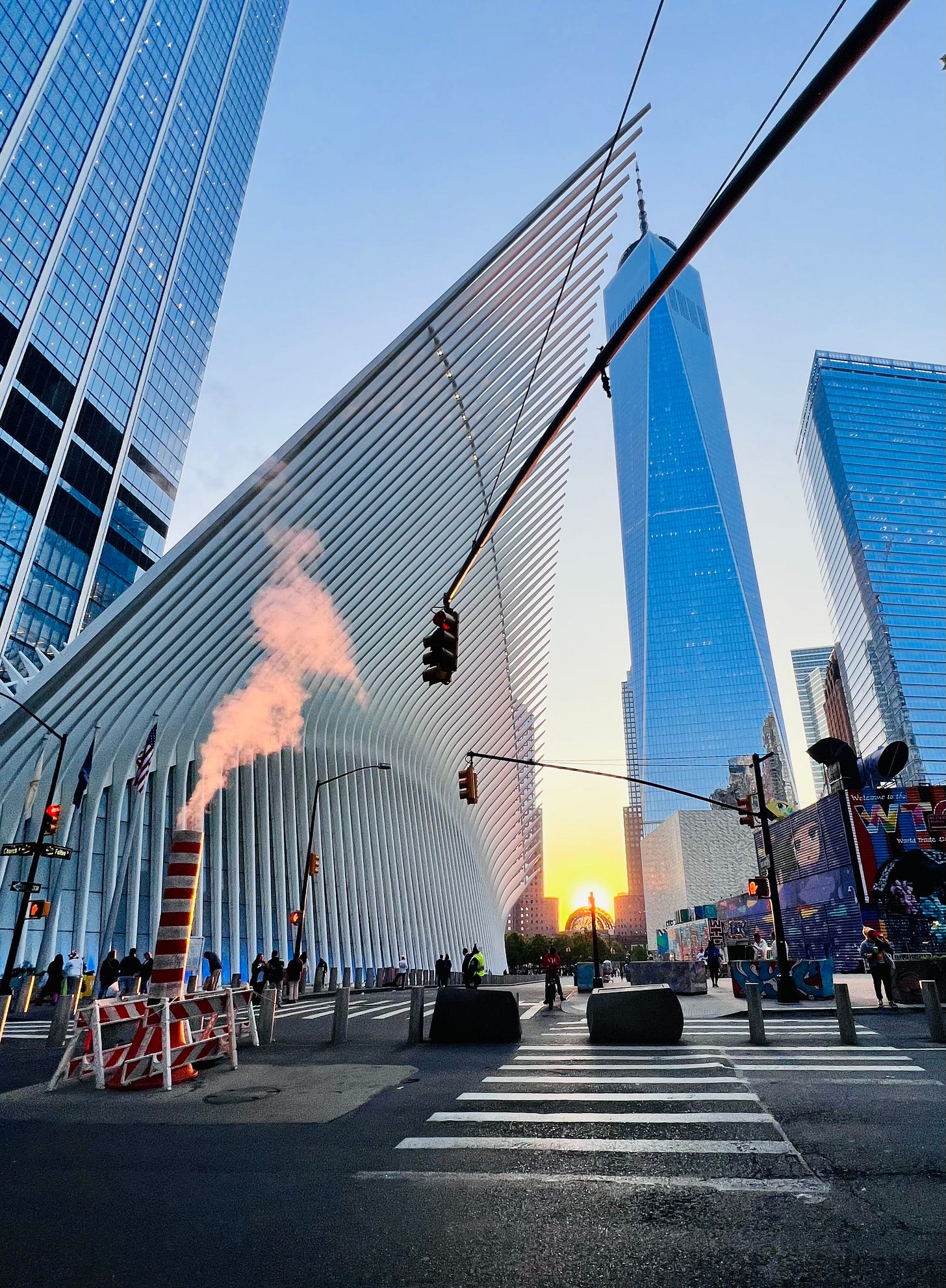

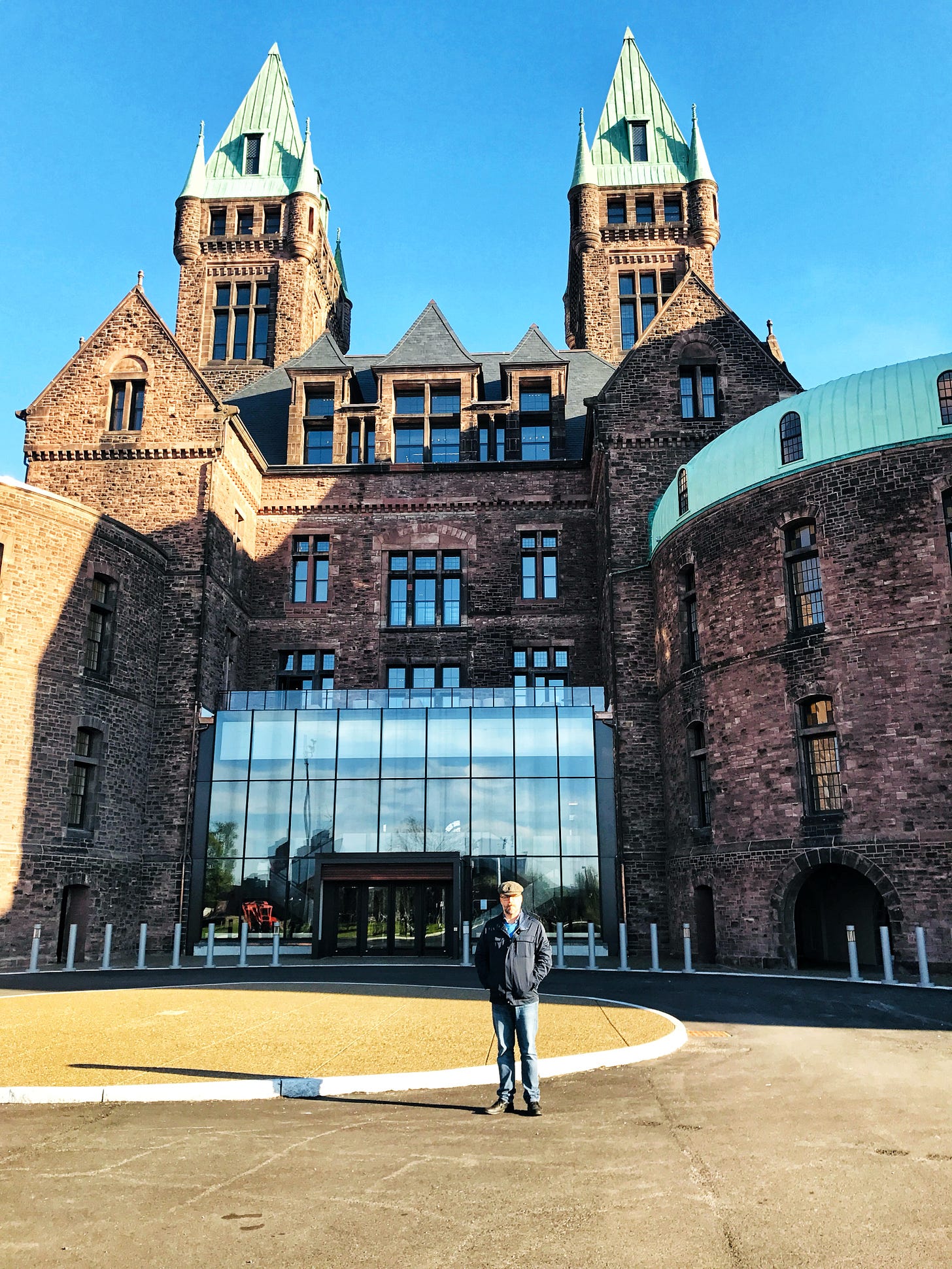


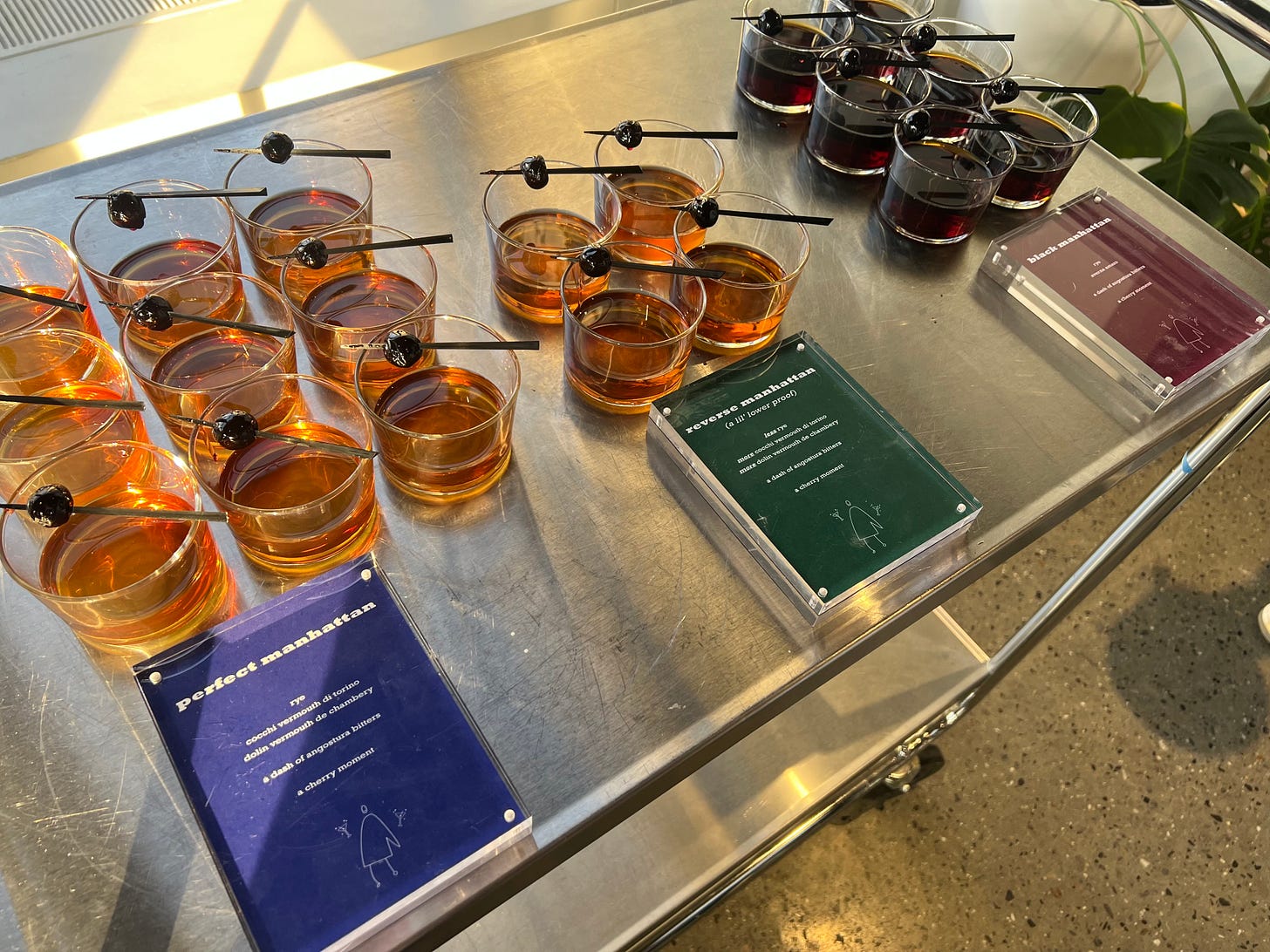
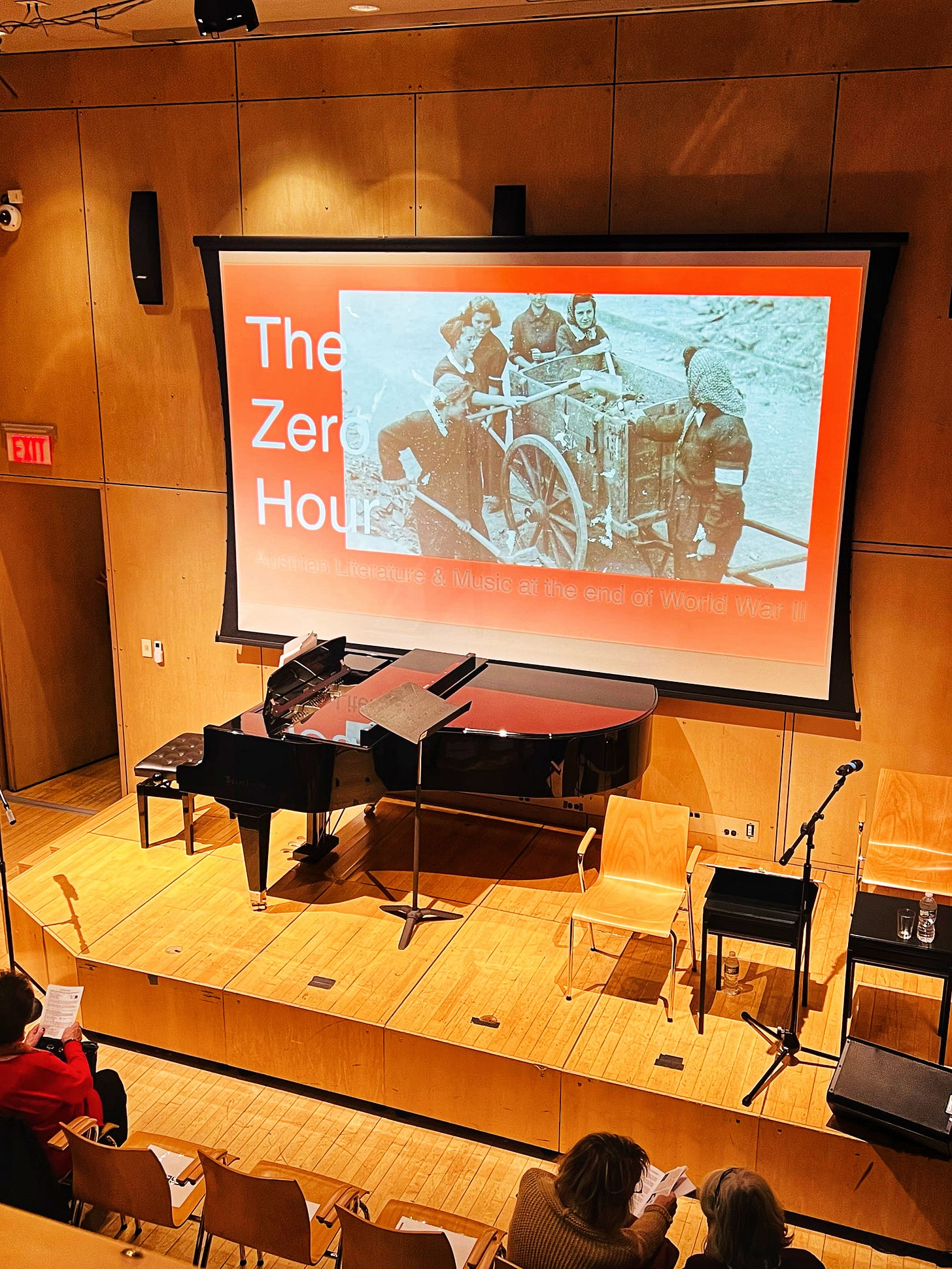
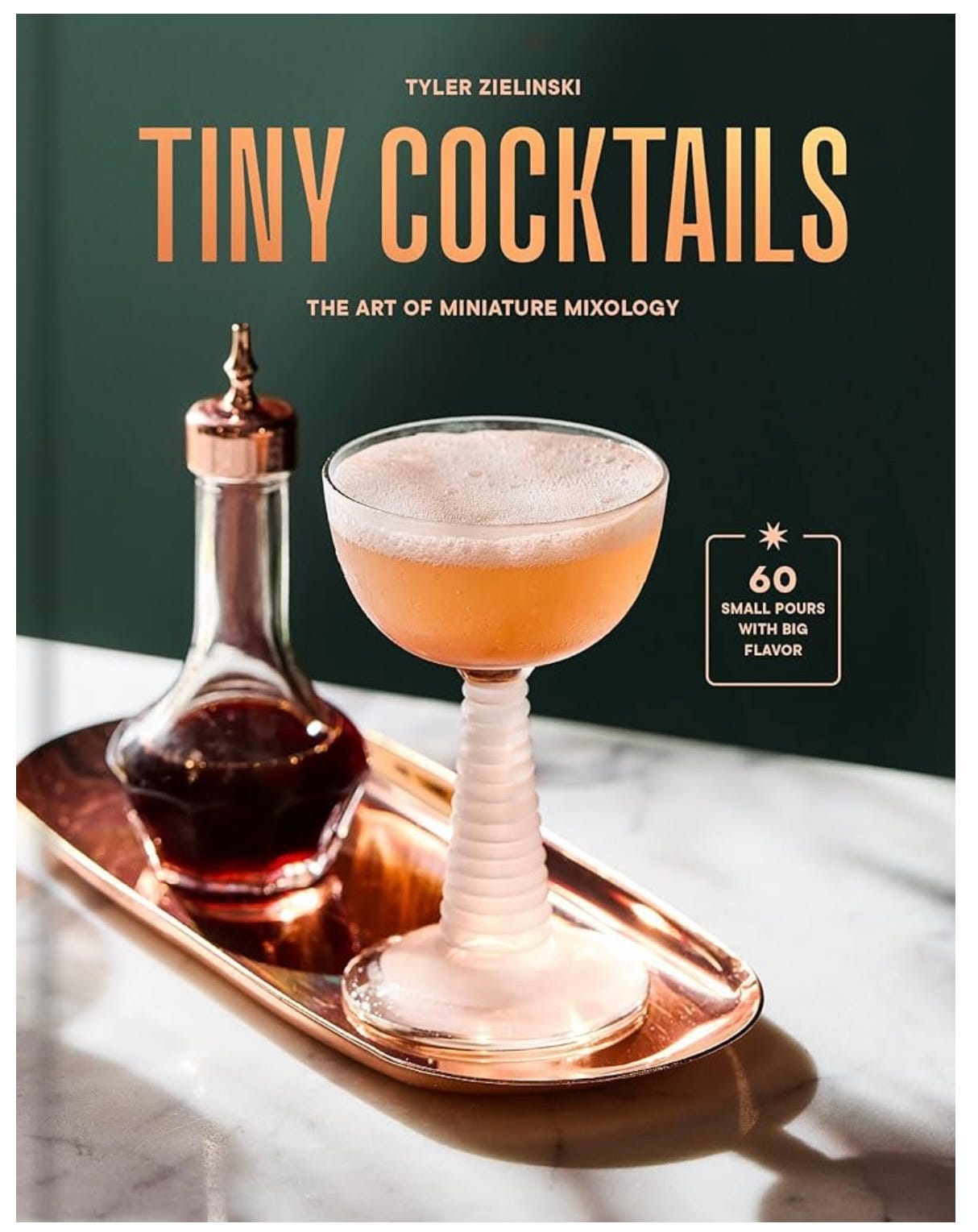
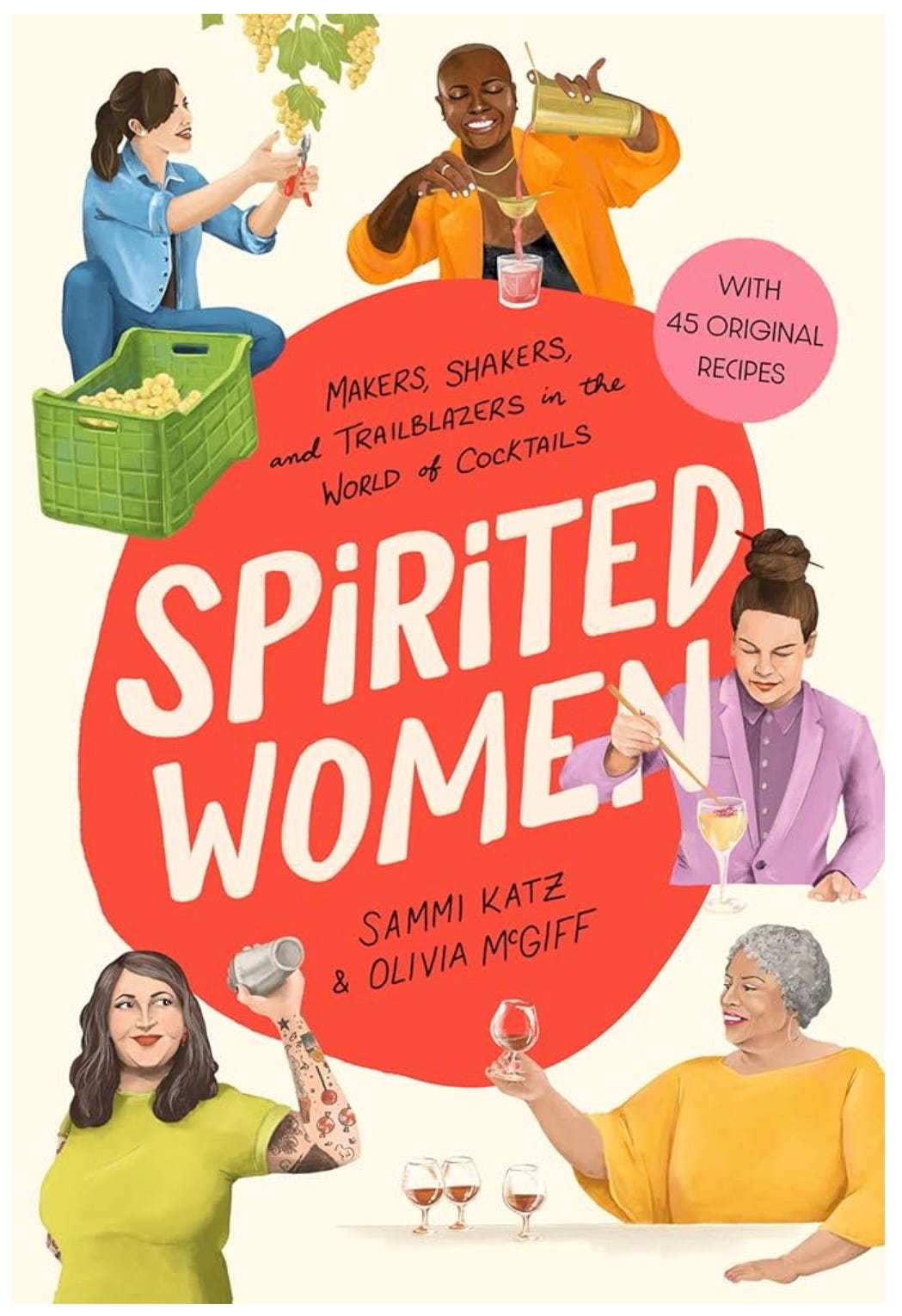
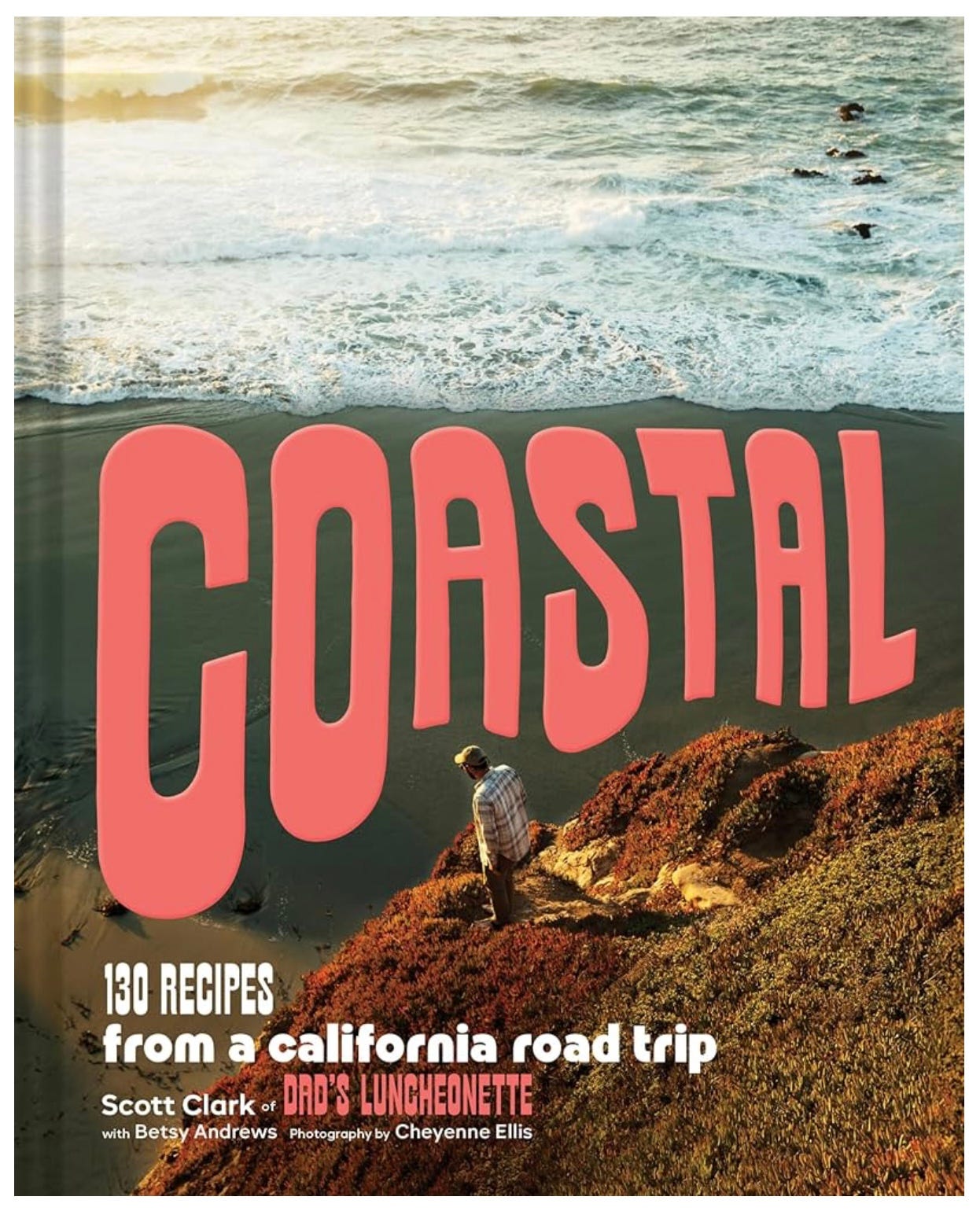
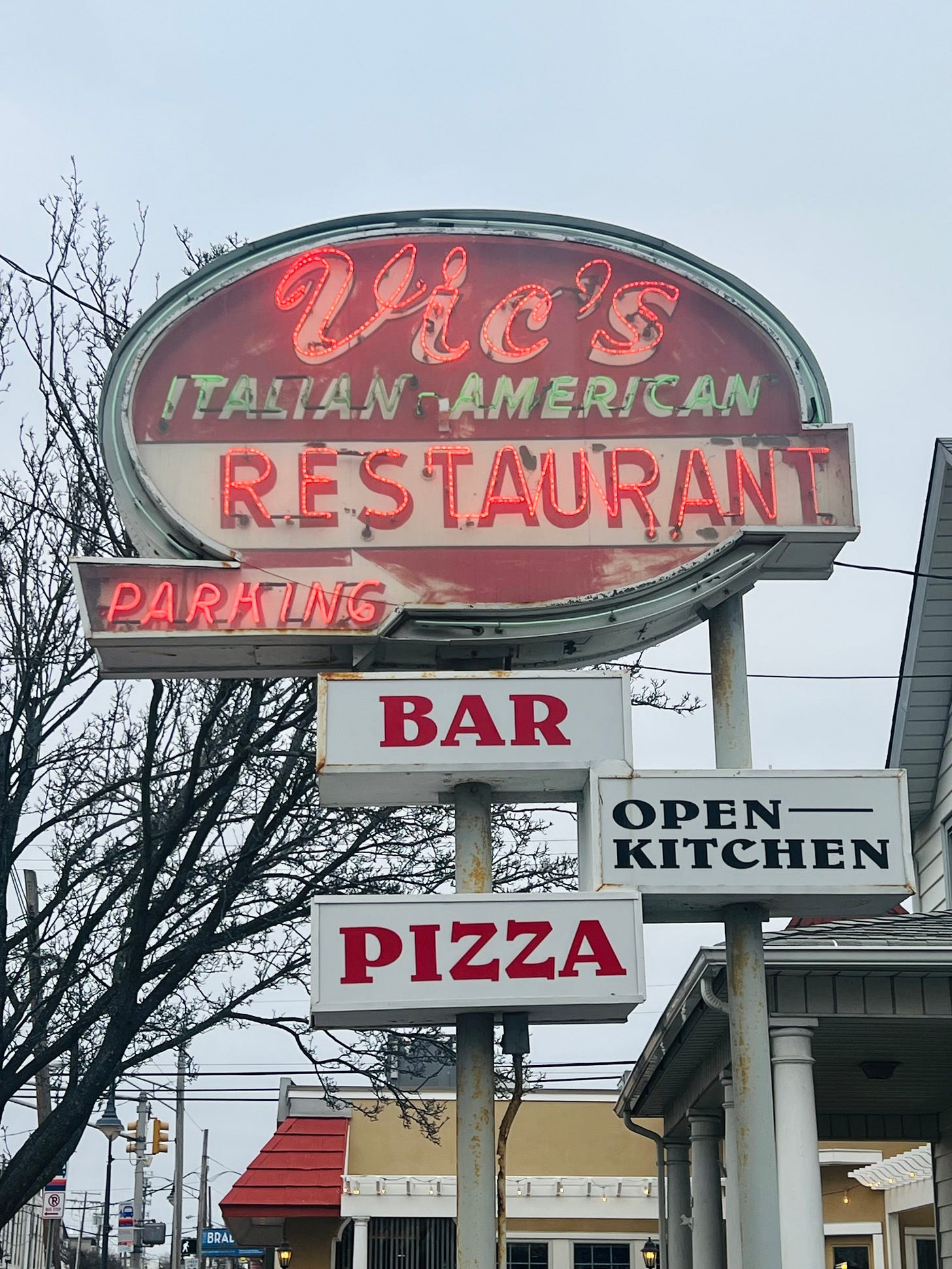
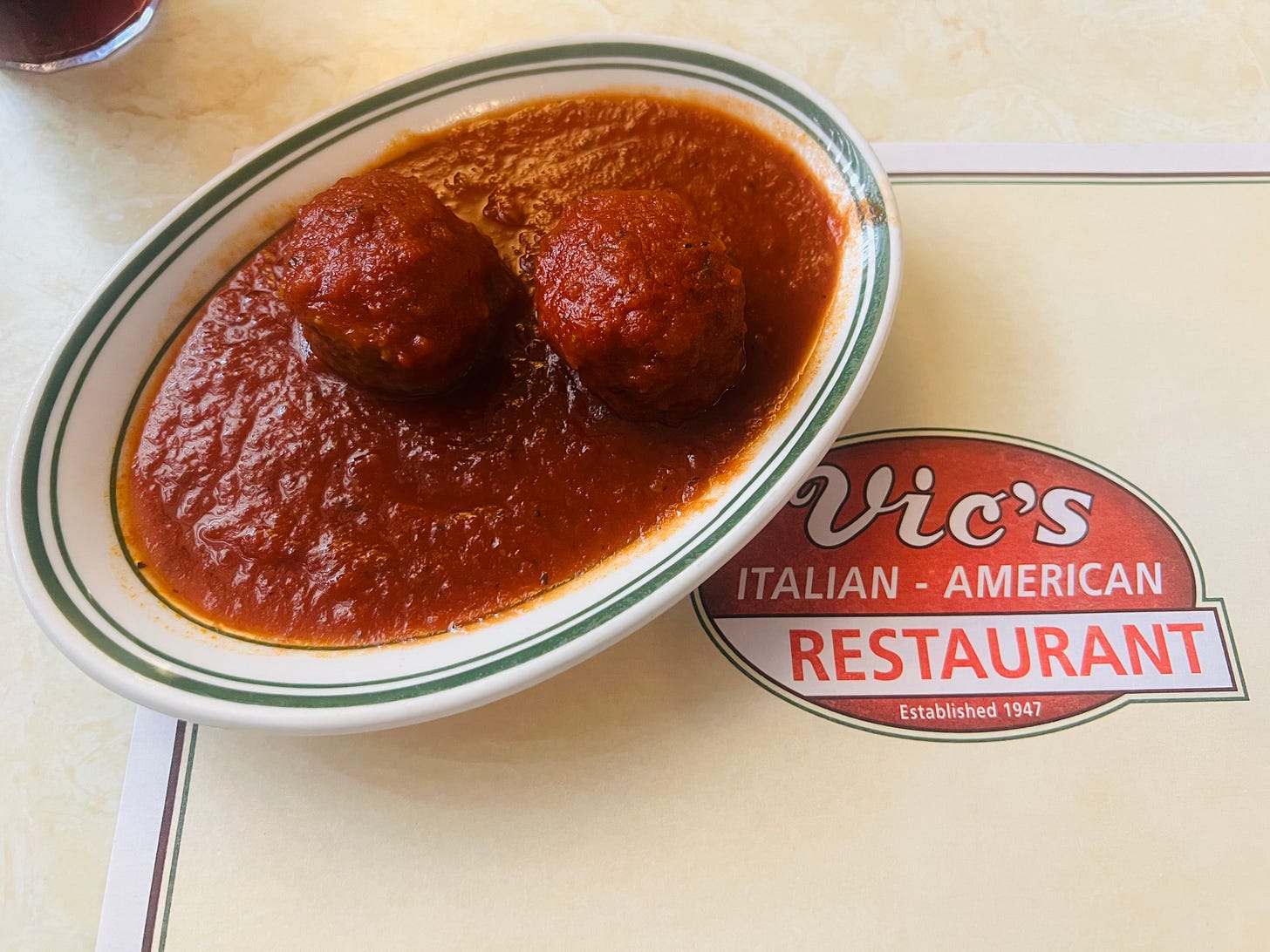


I can't wait to go to Vic's! I work with someone who said it was her Granddad's favorite place to go--and the kids still go when they miss him to hang out and eat his favorite food.
That was a great after-party! Thanks for coming...and writing about it. The next on-stage podcasts are with Scott Conant, Alex Guarnaschelli and Andrew Zimmern! NBPAC.org if anyone is interested. Get the VIP tickets for the after party. Easy train ride from Manhattan.